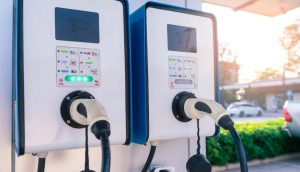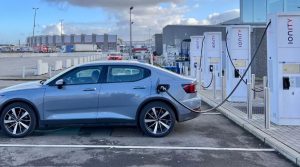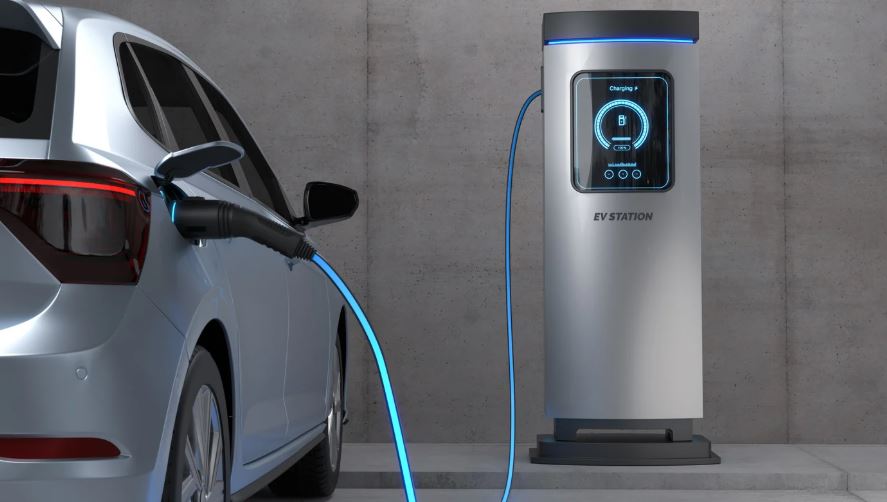Table of Contents
ToggleFor commercial fleet operators, adopting EVs is more than a nod to sustainability; it’s a strategic choice to reduce costs and streamline operations. Yet, the potential of EVs can only be maximised with well-designed and optimised EV charging infrastructure.
This guide explores how to optimise your infrastructure for maximum benefits, covering cost savings, operational efficiency, and sustainability.
Why Optimising EV Charging Infrastructure for Commercial Fleets is Essential?

For commercial fleets, EV charging isn’t just about plugging in vehicles and waiting. It’s a complex system that, when optimised, can unlock significant advantages. Poor planning and outdated approaches can lead to higher costs, bottlenecks in operations, and underused assets.
Optimisation ensures that your fleet’s charging needs are met reliably while keeping costs in check and reducing environmental impact.
From robust electrical infrastructure to strategic placement of electric vehicle charging hubs, proper planning is critical to making EVs work for your business.
Benefits of Optimising EV Charging Infrastructure
1. Cost Savings
One of the primary benefits of an optimised charging setup is cost reduction. Efficient scheduling, the right charging hardware, and proper energy management can significantly reduce your operational expenses. For instance:
- Lower Energy Costs: By using smart charging technology, you can schedule vehicle charging during off-peak hours, reducing electricity rates and avoiding demand surcharges.
- Minimised Maintenance: High-quality charging systems require less frequent upkeep, saving time and money in the long term.
- Government Subsidies: Many governments, including the UK offer incentives and grants for setting up EV infrastructure, which can offset installation costs if handled strategically.
2. Operational Efficiency
Time lost is money lost, especially for fleets that depend on tight schedules. A well-optimised EV charging strategy aligns with your operations to ensure vehicles are always ready when needed. Key aspects include:
- Fleet Integration: Charging systems integrated with fleet management software can give real-time updates on vehicle status, ensuring processes remain streamlined.
- Reduced Downtime: Strategically located electric vehicle charging hubs reduce the time vehicles spend off-route, improving fleet productivity.
- Scalability: An optimised infrastructure adapts as your fleet grows. Starting with a future-ready layout ensures your investment remains viable as EV adoption scales up.
3. Sustainability and ESG Goals
Corporate social responsibility has moved beyond a buzzword, it’s a benchmark investors, customers, and employees look for. An optimised EV charging setup actively contributes to your sustainability targets:
- Reduced Carbon Footprint: EV fleets already emit less than their petrol or diesel counterparts, and using renewable energy sources for charging amplifies this impact.
- Energy Efficiency: Smart systems ensure that energy is used responsibly, reducing waste and improving overall sustainability.
- Community Impact: Demonstrating your fleet’s commitment to greener practices can enhance your reputation and foster customer trust.
Key Components of EV Charging Infrastructure Optimisation

Strategic Placement of Charging Hubs
The location of your electric vehicle charging hubs is pivotal. They must be convenient for your operations while balancing cost and accessibility. Considerations include:
- Areas with high vehicle demand or routes your fleet frequently travels.
- Proximity to existing electrical infrastructure to keep installation costs manageable.
- Spaces that can accommodate future expansion as your fleet, or public access to chargers, grows.
Robust Electrical Infrastructure
An efficient electrical system underpins everything. Without careful planning, your infrastructure might not support more than a handful of chargers, bottlenecking growth. To avoid this:
- Evaluate load capacity and ensure there is room for expansion.
- Install smart energy management systems to monitor and optimise energy use.
- Incorporate renewable resources, like solar panels, to reduce reliance on grid electricity and cut costs further.
Smart Charging and Energy Management
Smart charging systems are the backbone of any optimised EV infrastructure. They use software to analyse patterns, respond to demand, and manage load dynamically. Here’s how they help:
- Real-Time Data: Monitor charging status and make adjustments as needed, avoiding over- or under-utilisation.
- Peak Demand Management: Prioritise which vehicles charge first, based on schedules and needs, to reduce peak energy consumption.
- Integration with Renewable Energy: Solutions like battery storage systems allow you to store surplus energy generated during off-hours for later use.
Future-Focused Scalability
The EV landscape is advancing rapidly, and fleets must adapt sooner rather than later. Build scalability into your plans by:
- Including modular designs that allow seamless expansion as charging needs increase.
- Investing in universal charging solutions that cater to a broad range of EV models.
- Engaging with suppliers who can offer long-term support and updates.
Practical Tips for Getting Started

If you’re considering optimising your fleet’s EV charging infrastructure, here are some actionable steps:
1. Conduct an Audit
Begin by identifying your current setup. Assess energy usage, vehicle schedules, and logistical challenges. Understanding your starting point helps in designing tailored solutions.
2. Collaborate with Experts
Work with experienced vendors who can help you plan not just for current needs but also for future scalability. Technical expertise ensures compliance with UK regulations and access to financial incentives.
3. Leverage Government Schemes
Take advantage of schemes like the UK’s Workplace Charging Scheme (WCS) to reduce installation costs. Staying familiar with grants and subsidies can save significant expenses.
4. Pilot Before Scaling
Implement smaller test runs to iron out kinks before rolling out infrastructure fleet-wide. This limits disruptions while fine-tuning implementation.
Final Thoughts
Optimising EV charging infrastructure is no longer optional for commercial fleets, it is a strategic necessity.
By investing in solutions like smart charging technology, well-located electric vehicle charging hubs, and robust electrical infrastructure, fleet operators can gain unprecedented advantages.
From cutting costs to enhancing sustainability metrics and ensuring operational efficiency, an optimised approach delivers measurable benefits.
The road toward net-zero emissions and future-ready fleets is being paved right now. By taking the time to plan and implement optimised EV solutions, you’ll save not just on expenses but also ensure your business is equipped to thrive in the evolving landscape of transportation.




